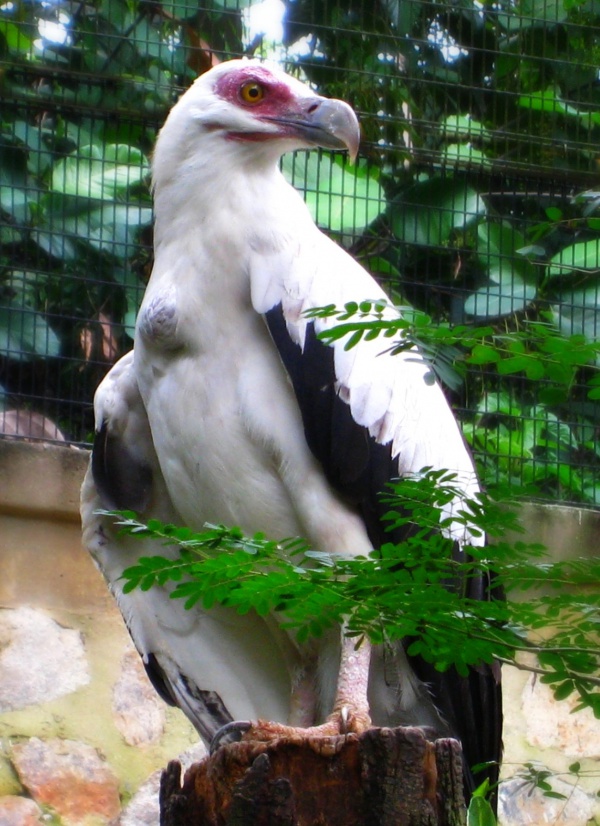Facts About Palm-nut vulture
The palm-nut vulture, also known as the vulturine fish-eagle, is a captivating bird of prey that stands out within the Accipitridae family. As the sole member of its genus, Gypohierax, it markedly differs from the New World vultures found across the globe. These birds are distributed throughout sub-Saharan Africa, predominantly inhabiting forested and savannah areas near water bodies and palm trees. In popular tourist destinations like The Gambia, you might even get a chance to observe one up close!
In terms of appearance, the palm-nut vulture is quite distinguishable. It predominantly features white plumage accentuated with striking black patches on its wings and tail, along with a distinctive red patch around each eye. It holds the title of the smallest vulture in the Old World, weighing approximately 1.3 to 1.7 kg, with an impressive wingspan of around 150 cm. These birds are widespread along Africa's coastline, with an estimated 80,000 pairs, including a small contingent of about 40 in South Africa.
The habitat of the palm-nut vulture is closely associated with oil and Raffia palms, flourishing in coastal forests and mangrove swamps. Their diet is uniquely suited to these environments, primarily consisting of the fleshy husks of oil palm fruits and the fruits of Raffia palms. However, they also consume other food sources such as crabs, fish, and small mammals. When it comes to nesting, these birds show a remarkable fidelity to their homes. Breeding pairs construct large nests in tall trees or at the base of Rafiah palms, consistently returning to these sites year after year.
In South Africa, these vultures are predominantly found in Raphia Palm groves. There are seven known nesting sites, hosting about 40 individual birds. Conservation efforts are geared toward protecting their habitats, such as the Isimangaliso Wetland Park, and promoting the growth of Raphia palms to provide both nourishment and nesting sites. Although they are not presently considered at immediate risk in South Africa, habitat loss due to sand dune mining and urban development poses a potential threat to their future.

 Lesotho
Lesotho